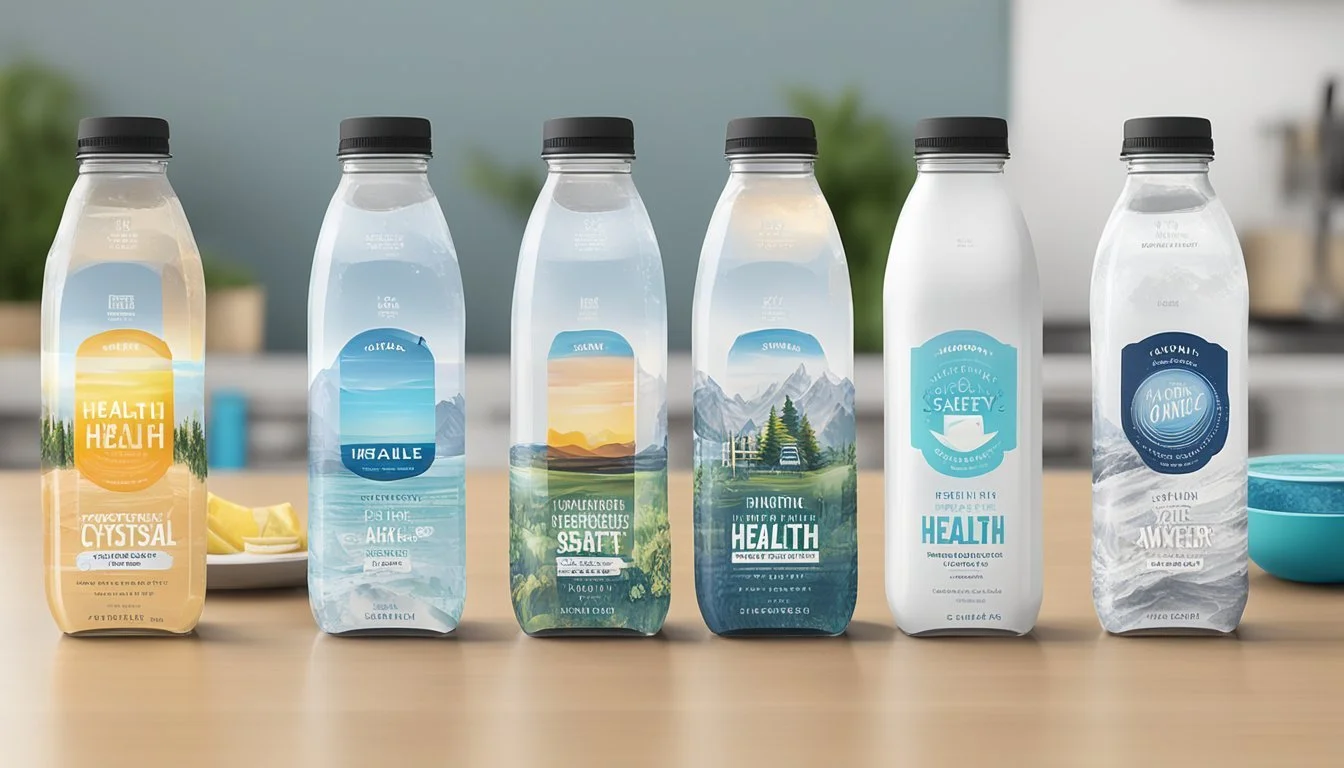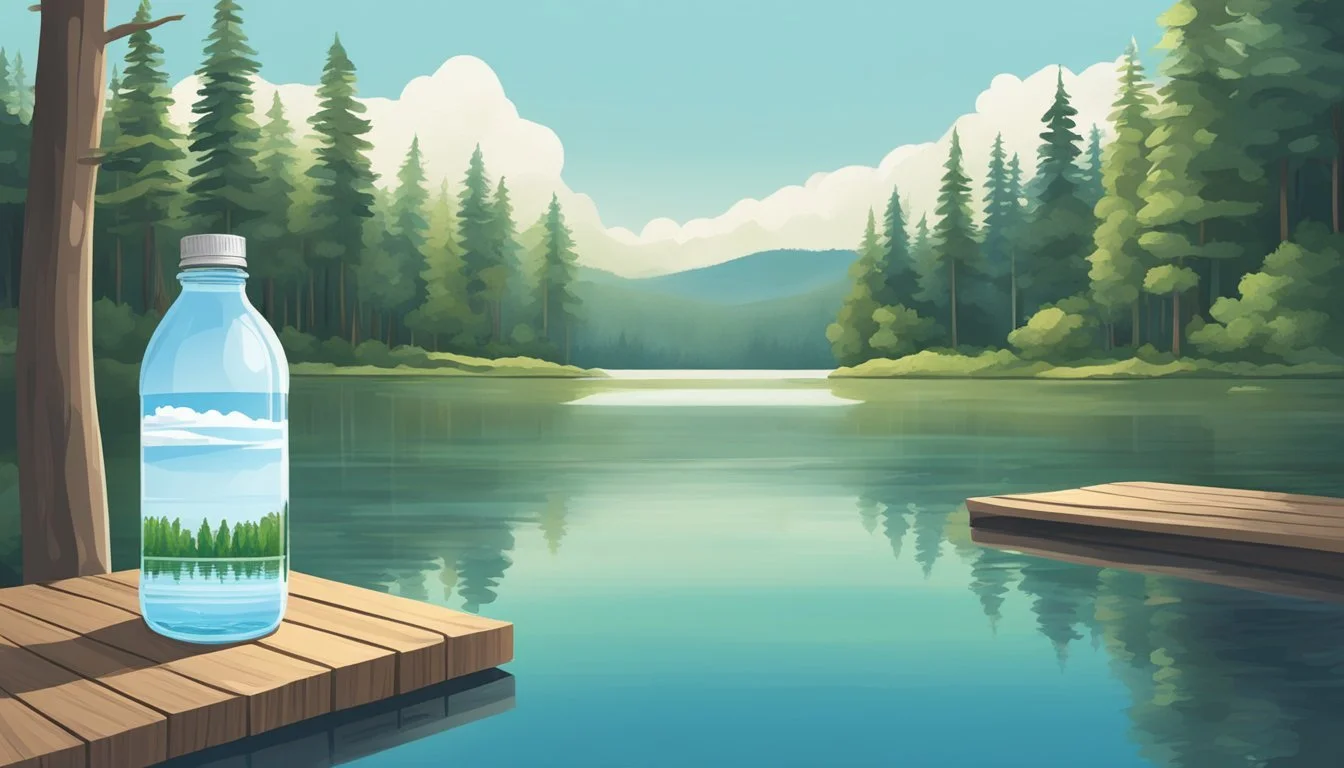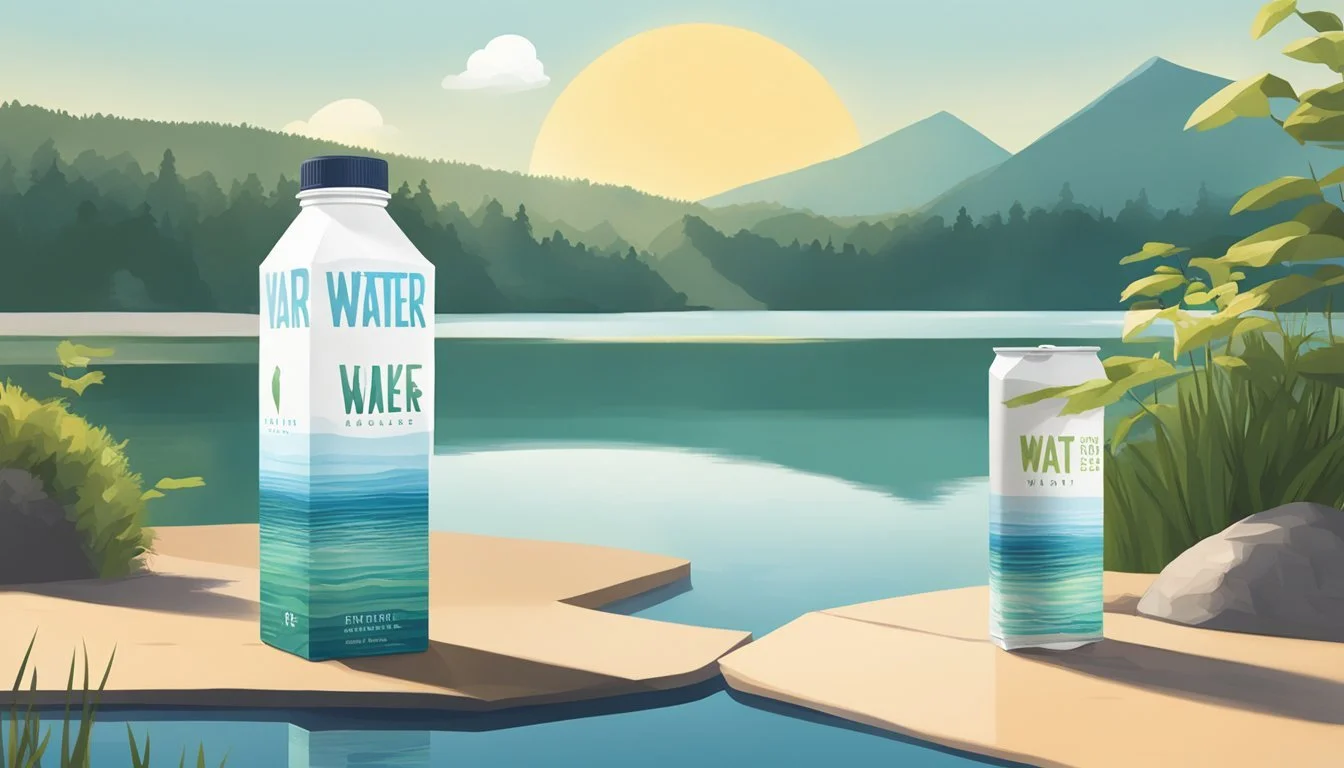Boxed Water vs. Crystal Lake
A Comparative Analysis of Bottled Water
Debates about bottled water have long centered on taste, environmental impact, and health benefits, making it crucial for consumers to discern the best options. Boxed Water, with its emphasis on sustainability, boasts an eco-friendlier carton composed mostly of paper. Crystal Lake, on the other hand, claims a purity and taste that many find unmatched in the industry.
The sustainability of Boxed Water is a significant draw for environmentally conscious consumers. Its cartons are a blend of sustainable paper, aluminum, and plastic film, designed to reduce plastic waste. Conversely, Crystal Lake water offers a crisp, clean taste that many believe to be superior, emphasizing purity and hydration.
Choosing between Boxed Water and Crystal Lake depends largely on individual priorities, whether those lean toward environmental impact or superior taste. The clear, fresh flavor of Crystal Lake is perfect for those prioritizing hydration and taste, while Boxed Water caters to those looking to reduce their ecological footprint.
History and Evolution of Bottled Water
Bottled water has seen significant changes over the years, transitioning from plastic to more sustainable alternatives like boxed water. Understanding the developments in packaging helps to see why these changes are crucial.
Rise of Boxed and Plastic Bottled Water
The bottled water industry began to grow rapidly in the late 20th century, as people sought convenient, portable hydration solutions. Initially, plastic bottles became the go-to option due to their lightweight and durable nature.
In 2009, Boxed Water was founded as a response to environmental concerns associated with plastic. Boxed Water began using paper-based packaging, aiming to reduce the environmental footprint. Unlike traditional plastic bottles, this packaging is made primarily from renewable resources and is recyclable.
Boxed Water Is Better is a notable brand from this movement. It aims to provide a sustainable solution while maintaining the convenience of bottled water. Their innovative approach marked a significant shift towards greener alternatives in the market.
Timeline of Water Packaging Innovations
1970s-1980s: Plastic bottled water gains popularity due to its convenience and durability.
1990s: Increased awareness of environmental issues begins to cast plastic in a less favorable light.
2009: Founding of Boxed Water, introducing paper-based packaging as a more sustainable option.
Water packaged in paper boxes offers an alternative to the environmental impact of plastic bottles, which contribute significantly to pollution. Aluminum and glass have also been explored as packaging solutions, but each has its own set of environmental and practical challenges.
This timeline reflects significant milestones in the history and evolution of bottled water, highlighting the ongoing search for sustainable packaging solutions.
Health and Safety Concerns
Health and safety are critical when evaluating bottled water options. The water quality, packaging materials, and regulatory standards significantly affect consumer safety and well-being.
Comparing Water Quality
Bottled water, whether boxed or traditional, should meet stringent quality standards. Studies indicate that nearly 64% of bottled water in America is just tap water, which might have several contaminants like caffeine, acetaminophen, and plastic-derived chemicals.
Boxed Water is marketed as a cleaner and more sustainable choice. It typically contains fewer contaminants due to rigorous filtration processes. Crystal Lake bottled water, on the other hand, is often scrutinized for containing potential impurities, depending on the water source. Testing for PFAS chemicals in various brands has revealed the presence of different contaminants.
Key Contaminants:
Microplastics
Alkaline levels
Fluoride and electrolytes
Analyzing Packaging Materials
Packaging plays a significant role in the health and safety of bottled water. Traditional plastic bottles, often used by brands like Crystal Lake, can leach chemicals into the water. This includes microplastics, which pose potential health risks when consumed over time.
Boxed Water uses paper cartons with plant-based plastics and minimal additional materials to enhance safety. The Boxed Water package is fully recyclable, reducing environmental impact.
Key Packaging Concerns:
Chemical leaching from plastics
Environmental impact of materials
Longevity and safety of paper-based packaging
Overview of Regulatory Standards
Regulatory standards ensure that bottled water is safe for consumption. Both boxed and traditional bottled water must adhere to strict guidelines set by health authorities.
Boxed Water is often sourced and tested under stringent conditions, ensuring minimal contaminants and compliance with regulatory limits for substances like fluoride and electrolytes. Crystal Lake must also meet these regulations, but variability in water sources can lead to inconsistent quality.
Regulatory Agencies:
Food and Drug Administration (FDA)
Environmental Protection Agency (EPA)
Local health departments
Detailed attention to these regulatory standards helps maintain the safety and health quality of both boxed and bottled water options.
Environmental Considerations
Assessing the environmental impacts of Boxed Water and Crystal Lake involves looking at sustainability of their water sources, packaging materials and carbon footprints, and issues around recycling and waste management.
Sustainability of Water Sources
Boxed Water sources its water from various locations ensuring that the extraction does not adversely affect local ecosystems. They focus on maintaining the natural balance and ensure minimal disruption. Comparatively, the sustainability of Crystal Lake's water sources can vary depending on the region and local practices.
Crystal Lake typically relies on spring water, which if not managed sustainably, can lead to depletion of local aquifers. Ensuring sustainable water extraction practices is crucial for maintaining the environmental balance and avoiding long-term negative impacts on local water supplies.
Packaging and Carbon Footprint Comparison
Boxed Water's packaging is primarily made from 74% paper, 25% plastic, and 1% aluminum. This combination seeks to reduce the reliance on traditional plastic bottles. The company claims its cartons are 92% plant-based, which substantially lowers their carbon footprint compared to regular plastic and aluminum bottles.
Crystal Lake predominantly uses plastic bottles, which have a significant carbon footprint due to the production and disposal processes. Some versions come in glass bottles, offering a more environmentally friendly option. Yet, energy consumption in glass production and transportation impacts the overall carbon footprint.
Material Boxed Water Crystal Lake Main Component 74% Paper Plastic / Glass Carbon Footprint Lower due to plant-based materials Higher for plastic, variable for glass
Recycling and Waste Management
Boxed Water promotes carton recycling, though the process can be more complex compared to recycling of pure materials like plastic or glass. Despite that, cartons reduce landfills due to their biodegradable components. Challenges exist with the availability of carton recycling facilities.
Crystal Lake's plastic bottles are recyclable in most regions but face low recycling rates, leading to significant landfill contributions. Glass bottles, while highly recyclable, are more energy-intensive to transport and recycle. Effective waste management is crucial to mitigate environmental impacts and promote sustainability.
Efforts to improve waste management in both types include increasing consumer awareness about recycling processes and enhancing the infrastructure for proper disposal and recycling.
Consumer Preferences and Trends
Understanding consumer preferences and trends is essential to evaluating the market for boxed versus bottled water products. Factors such as market analysis, drinking habits, and branding significantly influence consumer choices.
Market Analysis of Boxed vs. Bottled Water
The market for boxed water is growing as environmental concerns drive consumers toward sustainable packaging. Boxed Water Is Better, for instance, uses cartons made from 74% paper, appealing to eco-conscious buyers.
Meanwhile, traditional bottled water, like Crystal Lake, remains popular due to established trust and brand recognition. Consumer choice often hinges on factors like packaging convenience, cost, and environmental impact.
Shifts in Consumer Drinking Habits
Consumers are increasingly prioritizing hydration as part of a healthy lifestyle. This trend influences preferences between boxed and bottled water based on accessibility and personal usage patterns.
Boxed water is seen as a convenient, eco-friendly option for on-the-go hydration. Conventional bottled water, familiar and widely available, continues to cater to those seeking reliability and familiarity in their hydration choices.
The Role of Branding in Consumer Choice
Branding plays a crucial role in shaping consumer preferences. Boxed Water Is Better emphasizes its eco-friendly mission, appealing to environmentally conscious consumers. Its fun, milk box-style packaging adds to its appeal.
Conversely, established brands like Crystal Lake leverage their long-standing reputation and consistent product quality. Consumers often trust these brands, relying on their known reliability and availability.
Industry Perspectives
The bottled water industry is a dynamic field marked by innovation and ethical branding. Companies like Boxed Water and Crystal Lake compete to offer sustainable packaging and high-quality hydration.
Company Profiles and Ethos
Boxed Water: Founded in 2009, Boxed Water positions itself as an environmentally friendly alternative to traditional bottled water. The company emphasizes renewable, plant-based packaging and aims to reduce its environmental footprint.
Crystal Lake: Crystal Lake focuses on providing pure, mineral-rich water sourced from natural springs. Its branding revolves around purity and wellness, appealing to health-conscious consumers.
Both companies target eco-conscious and health-focused markets but differentiate through their core values—Boxed Water on sustainability and Crystal Lake on natural purity.
Innovations in Water Packaging
Boxed Water leads the industry in sustainable packaging with cartons that are 92% plant-based. These cartons use a mix of paper, aluminum, and plastic film to maintain durability and water resistance.
Other brands like Flow and Essentia have also explored innovative packaging. Flow uses Tetra Pak technology, while Essentia focuses on ionized alkaline water bottles.
The push for eco-friendly packaging reflects a broader industry trend toward sustainability. Innovative materials and designs aim to balance functionality with environmental responsibility.
Future Outlook and Predictions
The future of packaged water appears promising with a growing consumer demand for sustainability. Companies are likely to increase investments in eco-friendly materials and processes.
Trends suggest a potential increase in profits as consumers opt for environmentally-conscious brands. Core Hydration and Essentia may explore similar paths to align with this shift.
Water brands must stay ahead of regulatory changes and environmental standards. The focus will be on boosting transparency, improving packaging innovations, and maintaining water quality to meet consumer expectations.
Overall, companies that prioritize sustainability and quality will likely dominate the market.
Practical Guidance for Consumers
Choosing between boxed water and bottled water involves considering factors such as environmental impact, personal hydration needs, and the suitability of alternatives to single-use packaging. Here’s a focused look at these aspects.
How to Choose a Water Brand
When selecting a water brand, examine the source and ingredients. Bottled water should come from a reputable source and be free from contaminants. Some brands include unnecessary additives like sodium and artificial sweeteners, which may not be ideal for everyone.
Pay attention to packaging materials. Brands like Boxed Water Is Better use a high percentage of plant-based materials, which is more sustainable. Glass bottles are another eco-friendly option, as they are recyclable and reduce single-use plastic waste.
Check the label for detailed information about water content and packaging. This can help make an informed choice about what you’re consuming and its environmental impact.
Tips for Improving Personal Hydration
Maintaining hydration is essential for overall health. Drink clean water regularly, aiming for at least eight 8-ounce glasses per day. Carrying a reusable water bottle can help you keep track of your water intake throughout the day.
If you’re unsure about the quality of your tap water, consider installing a water filter for added safety and better taste. Municipal water supplies are generally safe but filtering can remove specific impurities.
Infuse your water with natural flavors like lemon or cucumber slices to make it more appealing. Setting reminders to drink water can also prevent dehydration, especially on busy days.
Alternatives to Single-Use Water Packaging
Switching to alternatives can significantly reduce environmental impact. Reusable water bottles made of stainless steel or glass are durable and don’t leach harmful chemicals. These bottles are perfect for daily use and travel.
Consider investing in a water pitcher filter or under-sink filtration system if you prefer home-based solutions. These options make tap water more palatable and reduce reliance on bottled water.
For those who need water on the go, products like Boxed Water offer a less wasteful option compared to traditional plastic bottles. Always aim to recycle any packaging you do use to minimize ecological impact.
Comparative Analysis
To evaluate which bottled water - Boxed Water or Crystal Lake - is superior, it is essential to consider both taste and distribution factors. Each can potentially influence customer preferences and satisfaction.
Taste and Palate Experience
A water sommelier can discern subtle flavor differences in bottled waters.
Boxed Water is praised for its neutral yet crisp taste. Reviews suggest it has a refreshing quality, making it a favorite among those who prefer water without strong mineral flavors. Its milk-box style packaging may also provide a unique drinking experience.
Crystal Lake, on the other hand, is renowned for its pure, clean taste. Bottled at the source, it often retains a distinct minerality that some consumers find appealing.
While taste preference is subjective, each brand offers unique qualities that cater to different palate experiences.
Product Accessibility and Distribution
Boxed Water is distributed through various sustainable channels, emphasizing its eco-friendly packaging. The use of cartons made from sustainable paper, aluminum, and plastic film makes it a portable and easily transported option. This packaging meets the growing consumer demand for environmentally conscious products.
Crystal Lake is typically more widely available due to its reputation and established presence in the bottled water market. Its traditional plastic packaging allows for easier stacking and distribution, making it convenient for retailers and customers seeking quick and accessible hydration options.
Both brands are readily accessible, yet their distribution strategies highlight different strengths in sustainability and convenience.
Closing Reflections
When comparing Boxed Water and Crystal Lake, several factors come into play, such as taste, sustainability, and overall quality. Here, the main points of consideration will help guide a thoughtful decision.
Summary of Key Points
Boxed Water stands out due to its sustainable packaging. The cartons are made primarily from paper, which reduces plastic waste significantly. This is a crucial point for consumers focused on environmental impact. Additionally, Boxed Water boasts a crisp taste, making it a competitive option in terms of flavor.
Crystal Lake, on the other hand, maintains a reliable taste profile that appeals to many. However, the reliance on plastic bottles remains a concern. The consistency and availability of Crystal Lake make it a practical choice, although it doesn't offer the same environmental advantages as Boxed Water.
Making an Informed Decision
The bottom line when choosing between Boxed Water and Crystal Lake hinges on what the consumer values most. If sustainability is a priority, Boxed Water provides a clear edge with its eco-friendly packaging and reduced oil dependence.
Taste and reliability are also essential factors. Boxed Water's packaging not only supports sustainability but also keeps the water tasting fresh and crisp. Crystal Lake’s consistent flavor and availability continue to make it a go-to for many, despite the environmental concerns associated with plastic bottles.
By weighing these factors—taste, sustainability, and packaging materials—consumers can make a decision that aligns with their values and preferences. Both options have distinct advantages, and the final choice depends on what the consumer considers most important.








